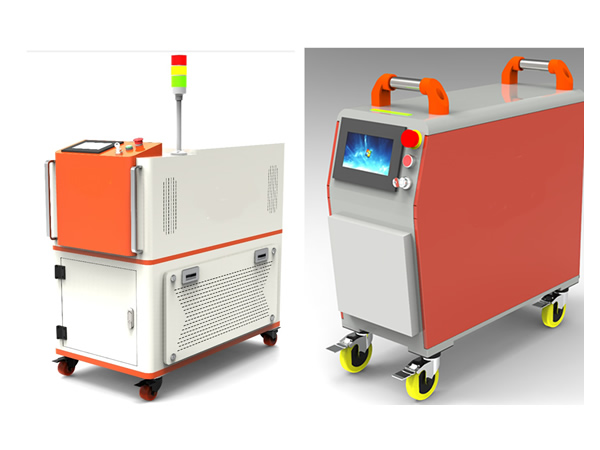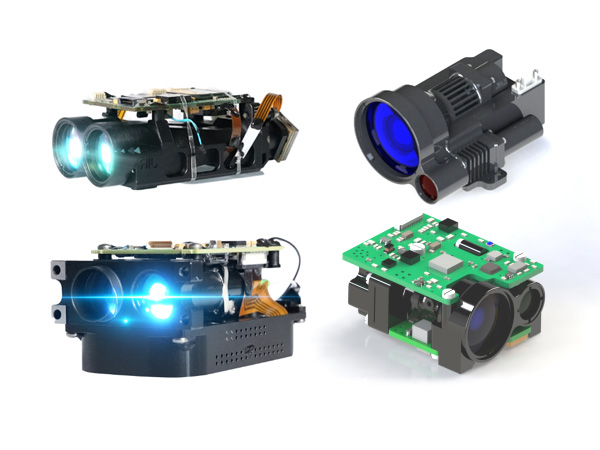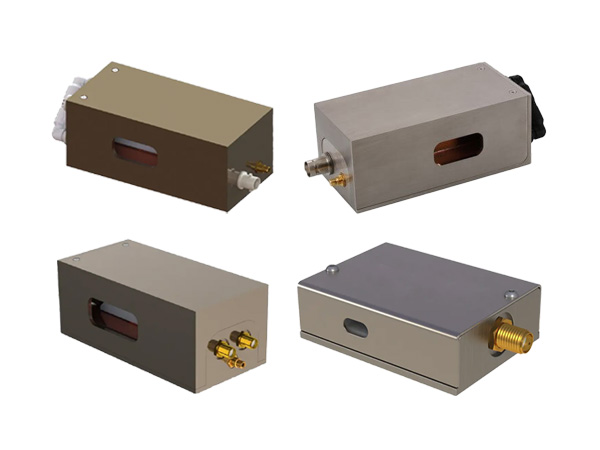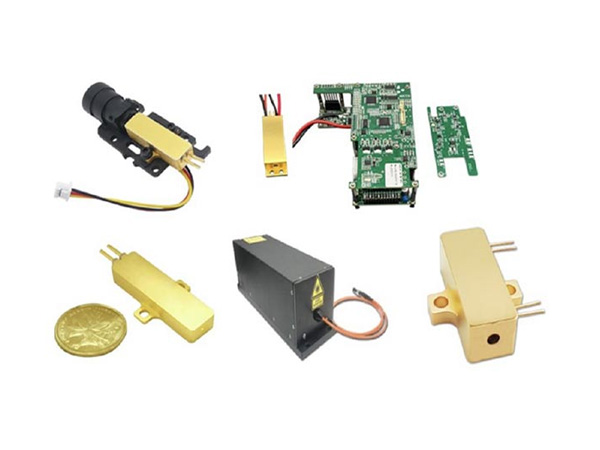Frequency Combs
An optical frequency comb is an optical spectrum consisting of a series of discrete equally spaced lines in the frequency domain. Optical frequency combs can be generated in different ways, but have gained more attraction since the ground-breaking contributions to the optical frequency comb technique using modelocked lasers from John L. Hall and Theodor W. Hänsch, both receiving the Nobel Prize in Physics in 2005. Frequency combs can be used for frequency metrology [1], precision spectroscopy [2], distance measurement [3] or telecommunications [4], just to name a few applications.
An optical frequency comb can be regarded as a ruler for frequencies. If the comb frequencies are known other frequencies can be measured by measuring beat notes. The frequency of these beat notes is then the difference in frequency of the unknown frequency and the comb frequencies. For measurements within a wide frequency range (long optical ruler) the frequency comb needs a large bandwidth.
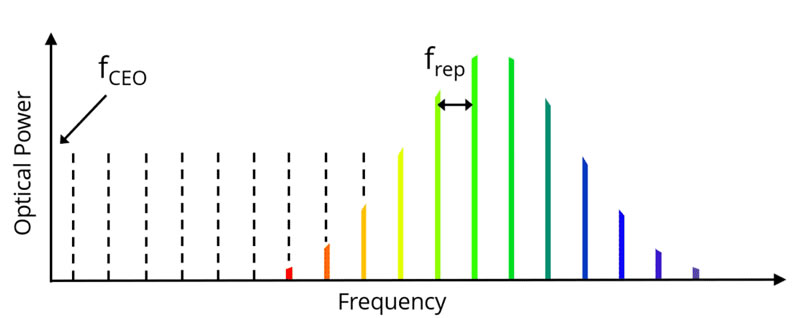
Femtosecond modelocked lasers are very suitable sources for generating very broadband frequency combs. The optical spectrum of a modelocked laser consists of discrete lines with a spacing equal to the pulse repetition frequency (frep). This is already a frequency comb with a bandwidth of several nanometres to several tens of nanometres. Using strong optical nonlinearities outside the laser cavity, for example from highly nonlinear optical fibers (HNLF) the comb can be further broadened. These techniques can lead to so-called octave-spanning spectra, optical spectra for which the highest frequency is at least twice the lowest frequency.
If the pulse train would be perfectly periodic – also with respect to the electric field and not only the pulse envelope – all the comb lines would simply be harmonics of the pulse repetition frequency. In reality the oscillations of the electric field are constantly shifted with respect to the pulse envelope. The rate at which the peak of the carrier slips from the peak of the field envelope on a pulse-to-pulse basis is called carrier-envelope offset (CEO). In the frequency-domain the carrier-envelope offset frequency (fCEO) is the offset of the frequency comb from the “zero-point” in the optical spectrum. If the two parameters frep and fCEO are known, all frequencies of the comb are known.

The noise of frequency combs is of high importance. Sources of noise can be mechanical vibrations, pump intensity fluctuations or different types of quantum processes, e.g. the stochastic nature of the output coupling or spontaneous emission in the gain media. The noise on the different comb lines is partly correlated, e.g. noise from mirror vibrations, but there is some level of noise which is uncorrelated. An additional complexity is that noise on frep and fCEO is also partly correlated, but to a different extend depending on the noise source [5]. Typically, in order to perform ultra-precise measurements, both frep and fCEO are stabilized. fCEO can be stabilized with a feedback system, in which the error signal may be generated from a f-2f interferometer [6, 7]. Stabilizing frequency combs may be quite cumbersome, it is therefore important to use a modelocked laser with best possible noise performance at the origin of the comb generation.
Our STMH-1550 is the only industrial-grade femtosecond lasers centred at 1550 nm with pulse repetition rates in between 250 MHz and 2.5 GHz. For many applications requiring large comb-spacing this repetition frequency range is ideal. The optical spectrum centred in the telecom C-band is ideal for telecom applications, or other applications benefiting from reliable and cost-effective telecom components.
All lasers of the STMH-1550 SERIES have an optional fast repetition rate tuning with a modulation bandwidth of >50 kHz for repetition rate locking or synchronization. In addition, there is also the option for fast modulation of the pump current.
The STMH-1550 SERIES reaches unmatched levels of industrial quality and environmental stability. It has been excessively tested for vibrations, shocks and other external disturbances (space and aerospace related standard tests). For integration into space-critical applications, customized small-sized versions are available.
T. Udem et al., “Absolute optical frequency measurement of the cesium D-1 line with a mode-locked laser”, Phys. Rev. Lett. 82 (18), 3568 (1999)
N. Picqué and T. W. Hänsch, “Frequency comb spectroscopy”, Nature Photon. 13, 146 (2019)
T. R. Schibli et al., “Displacement metrology with sub-pm resolution in air based on a fs-comb wavelength synthesizer”, Opt. Express 14 (13), 5984 (2006)
P. Marin-Palomo et al., “Microresonator-based solitons for massively parallel coherent optical communications”, Nature 546, 274 (2017)
R. Paschotta et al., “Optical phase noise and carrier–envelope offset noise of mode-locked lasers”, Appl. Phys. B 82 (2), 265 (2006)
H. R. Telle et al., “Carrier–envelope offset phase control: a novel concept for absolute optical frequency measurement and ultrashort pulse generation”, Appl. Phys. B 69, 327 (1999)
D. J. Jones et al., “Carrier–envelope phase control of femtosecond mode-locked lasers and direct optical frequency synthesis”, Science 288, 635 (2000)
 English
English Français
Français Deutsch
Deutsch euskara
euskara Русский язык
Русский язык Italiano
Italiano Português
Português Nederlands
Nederlands Polski
Polski Greek
Greek Lietuva
Lietuva Türkçe
Türkçe 日本語
日本語 한어
한어 中文
中文 தாமில்
தாமில் فارسی
فارسی हिंदी
हिंदी Tiếng Việt
Tiếng Việt ภาษาไทย
ภาษาไทย Pilipino
Pilipino Indonesia
Indonesia தாமில்
தாமில்

